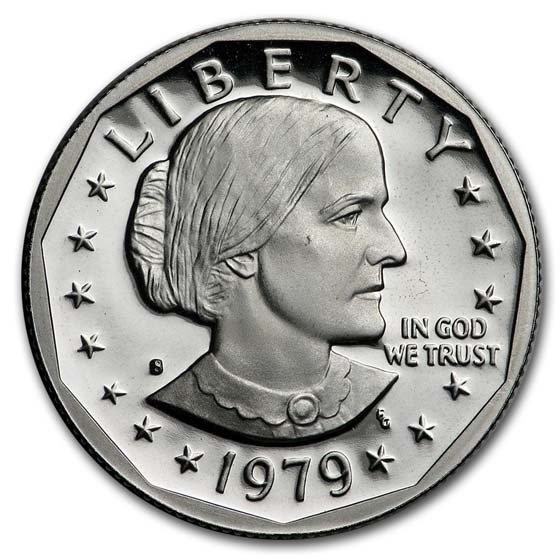This article describes the history of the Susan B. Anthony $1 coin.

In 1978, President Jimmy Carter authorized the production of a one-dollar coin featuring suffragist Susan B. Anthony on the front. The authorization of the coin was considered a landmark moment, as it was the first United States coin featuring a woman. It featured an eagle in flight on the reverse side. The coin was designed to replace the much larger Eisenhower dollar. The decision to include Anthony on the coin was not without controversy. Coin collectors and purists believed that an image of Liberty should be featured, and others who agreed with the inclusion of Anthony disagreed about the age in which she should be depicted. Ultimately, the artist, chief engraver for the United States Mint, Frank Gasparro, decided to depict Anthony at age 50. The first Anthony coins were produced in 1979. In total, over a billion and a half coins were produced, partly because officials from the U.S. mint feared they’d be hoarded by collectors.
Did People Use Them?
While the American public seemed to enjoy the novelty at first, it quickly became apparent that the coin's time was very limited. People complained that it looked and felt too much like a quarter, and cash registers weren’t made with compartments to hold the coins. Worst of all, however, was the fact that vending machine companies refused to adopt the coin, meaning they couldn’t be used In such machines for soft drinks and snacks. By 1981, the United States Mint ceased production of the coins. The Susan B.Anthony one dollar coin was considered a great failure. Remaining coins were taken out of circulation and stored in vaults.
Resurrection
In 1984, however, the Anthony coins got a second chance at life when the Baltimore, Maryland subway and other mass transit systems started using the coins as tokens to purchase tickets, and also began dispensing them to subway patrons as change. In addition, the United States Postal Service started accepting the Anthony coins in stamp vending machines. Soon, the vaults that once held the coins were empty, but still, use of the dollar coin was very limited.
In 1997, the United States Mint authorized production of the Sacagawea gold dollar coin. Because production could not meet the anticipated demand, the Susan B. Anthony dollar was temporarily brought back into circulation in 1999 during production of the gold dollar coins. At the end of that year, production of the Susan B. Anthony coins was halted forever, in favor of the Sacagawea dollar coin and other gold dollars.Related activities
Advertisement

